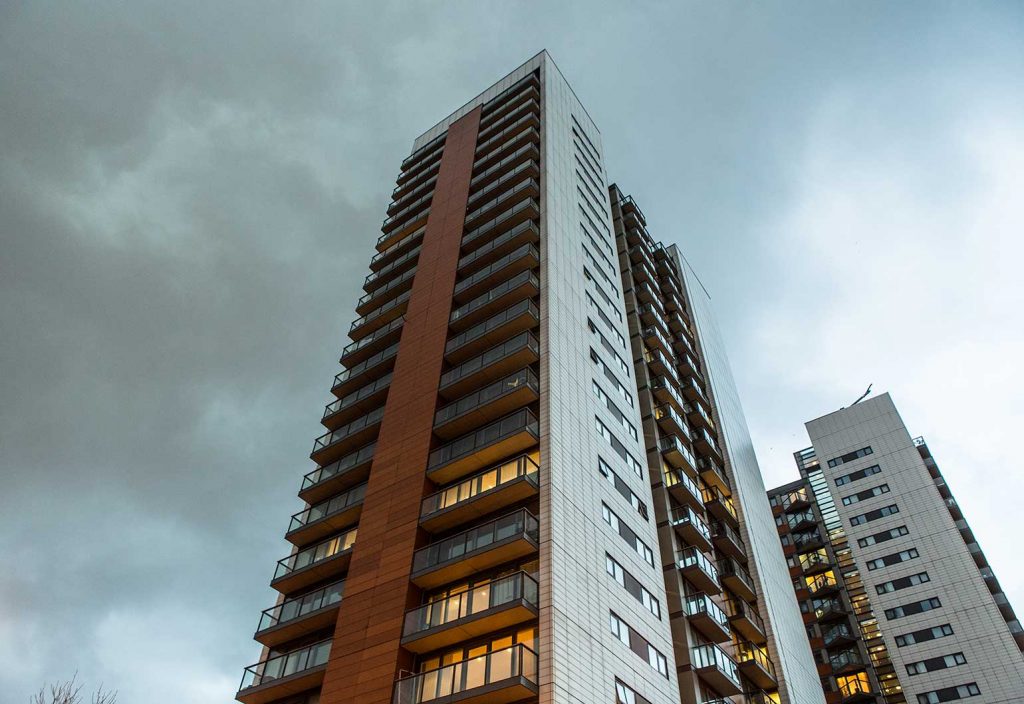Across the country, hundreds of high-rise residential apartment buildings have high-risk flammable cladding that must be removed. A new partnership will equip engineers with the knowledge to help address the problem.
It has been almost five years since the devastating Grenfell Tower fire in London highlighted the fatal consequences of flammable cladding. Along with the 2014 Lacrosse tower blaze in Melbourne, the Grenfell fire caused Australian states and territories to audit their own buildings and identify and address safety risks.
In New South Wales, the state government launched Project Remediate, a three-year program that helps eligible owners corporations to fix flammable cladding on high-risk, residential apartment buildings. The opt-in program provides 10-year, interest-free loans and program management and assurance services delivered by industry experts.
The remediation work and other services are overseen by Hansen Yuncken, who were appointed as Managing Contractor for Project Remediate in July last year.
Construct NSW Program Manager Vanessa Carmody-Smith said that over 200 eligible owners corporations had already registered to have their cladding removed through Project Remediate.
The scale and gravity of the issue means it is important that engineers and others in the construction industry have access to the right resources, Carmody-Smith said. With appropriate training available on the market, the OBC partnered with Engineering Education Australia (EEA) to develop two courses on cladding remediation, delivered through Construct NSW.
“We’re very conscious that over the next three years, flammable cladding will be coming off residential buildings in much larger volumes and at a quicker rate than it has been previously,” Carmody-Smith told create.
“We really wanted to work with EEA to get these courses out, because it’s what’s needed right now. There are companies across NSW, Victoria and the rest of the country that need this information, and engineers especially will be at the forefront of dealing with remediating cladding.”
Cladding remediation 101
The first of the two-hour online courses, Cladding Remediation: Part A, provides an introduction to façades and cladding, how façades fail, prioritising defects and the recommended course of action to address such defects.
Its follow up course, Cladding Remediation: Part B, launched this week and delves deeper into technical information, using real-life case studies to demonstrate how to address typical façade and cladding defects.
The courses were developed in collaboration with Engineers Australia member and Chartered engineer Colin Lim MIEAust CPEng. An Adjunct Professor at the University of Technology, Sydney, Lim has been a building consultant and engineer for more than 30 years and specialises in building façades and remedial works. He was Technical Director of Façades at AECOM before starting his own consultancy firm, Lim Façade Consultants.
EEA General Manager Alexandra Sparvell said having such a well-respected expert develop the courses ensured they were fit for purpose.
“Colin Lim is a renowned expert in this area and we worked with him to build the courses from the ground up,” she told create.
“He has put in a great deal of effort and energy to make sure these courses include everything they need to.”
Ultimately, Sparvell said, it is about raising awareness of the issues within cladding remediation and providing engineers with an understanding of how to approach it.
“We’re not creating cladding professionals through two two-hour courses, but we’re providing tools for engineers at their desks right now,” she said.
“This includes who you need to work with, what you can ask questions about — it’s about understanding what the issues are and how to approach remediation.”
Partnering for change
The cladding courses are the first of four training modules that will be produced by EEA and the OBC this year.
Engineers Australia’s Chief Engineer Jane MacMaster FIEAust CPEng said it was important for Engineers Australia to work with regulators to improve the standard of engineering practice in the country.
“Regulators such as the OBC have well-established knowledge in the common risk areas of design and construction through audits and other enforcement activities,” she said.
“We appreciate this opportunity to jointly produce the training modules and upskill the profession … We’ll continue to explore opportunities such as joint training modules and webinars with regulators to help address common issues and bring lessons learned to our members.”
Learn more about Cladding Remediation: Part A and Cladding Remediation: Part B.
